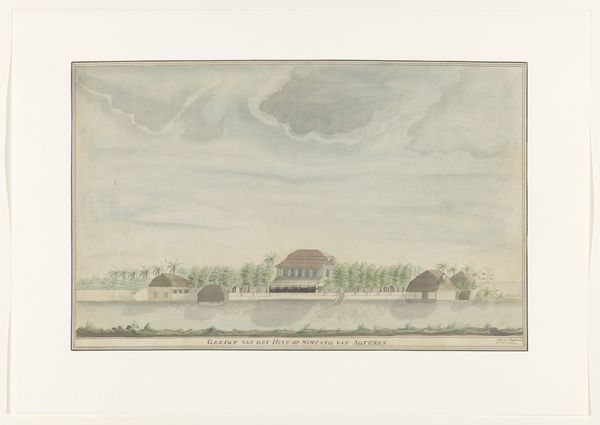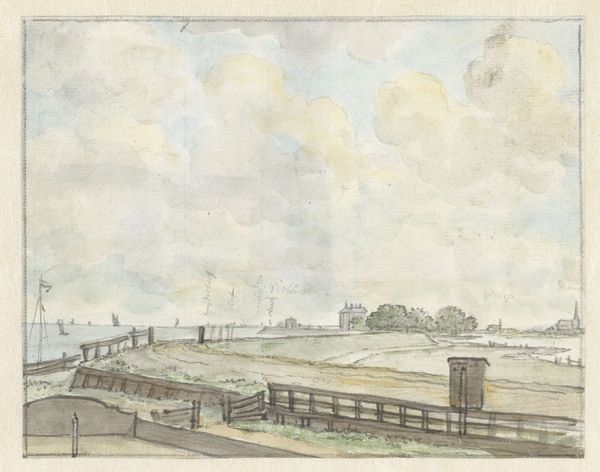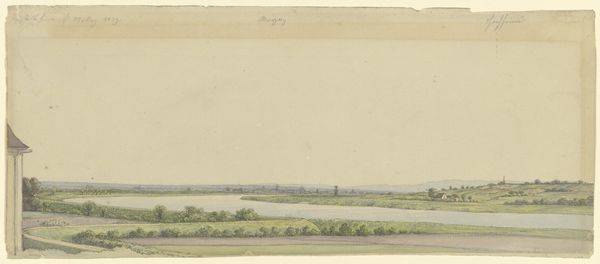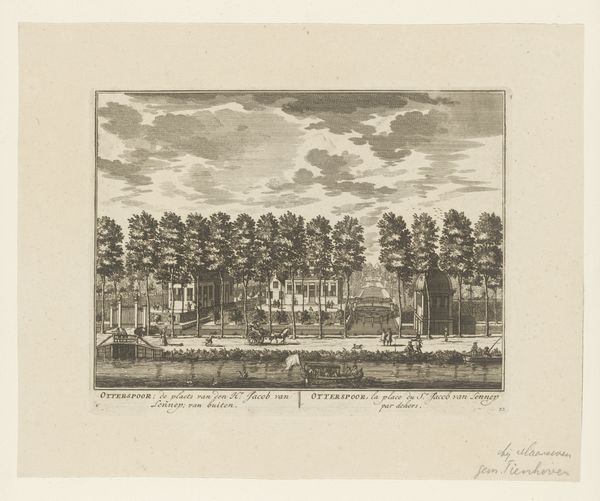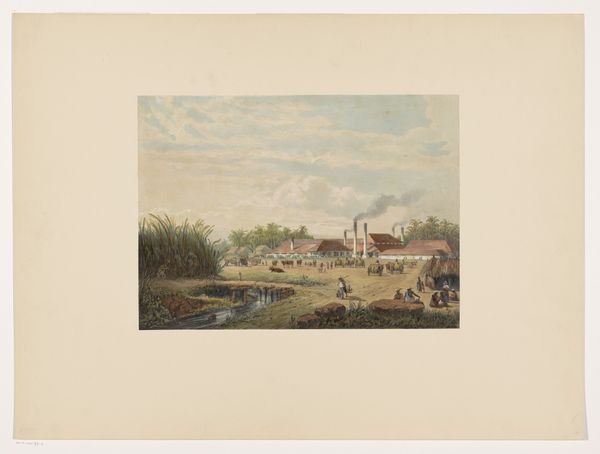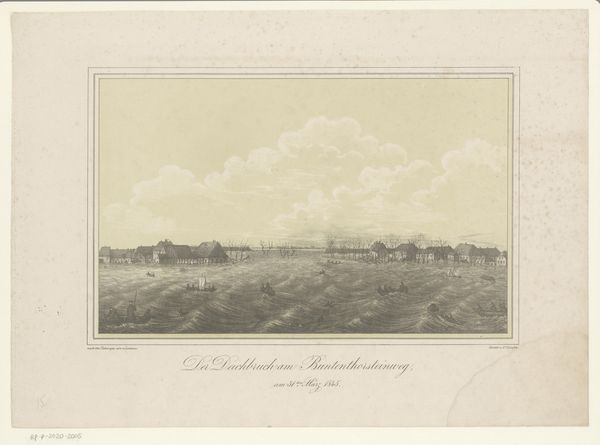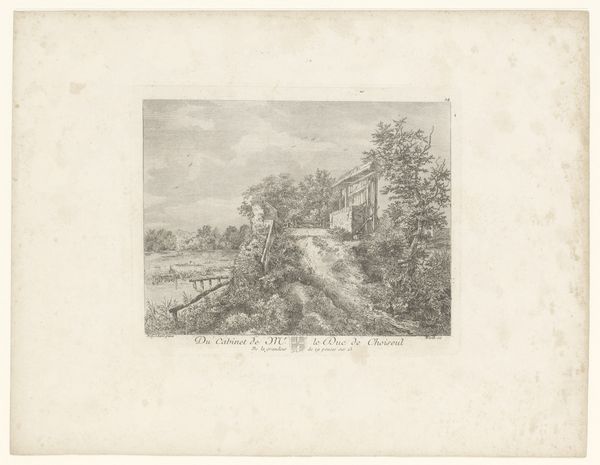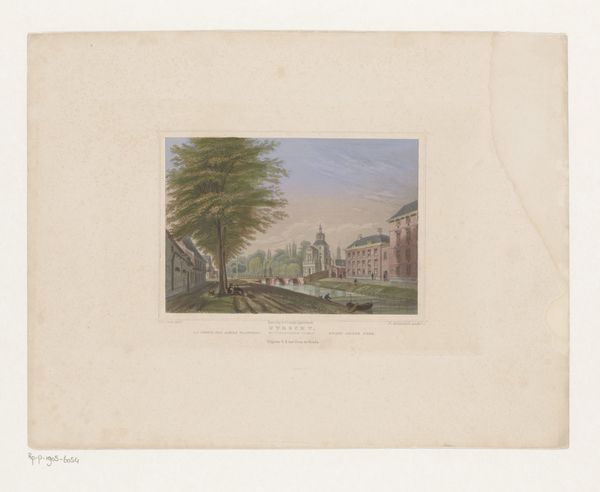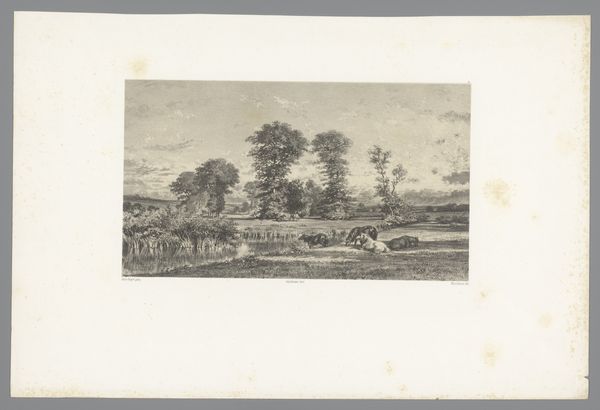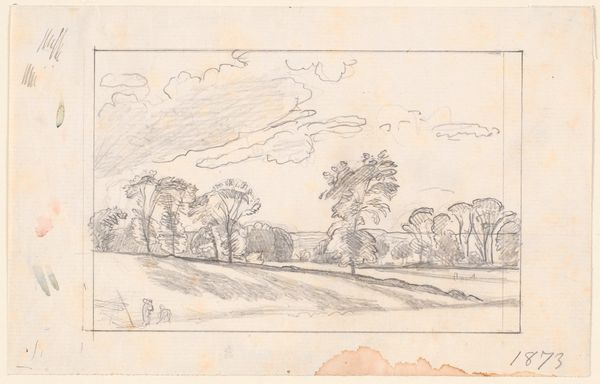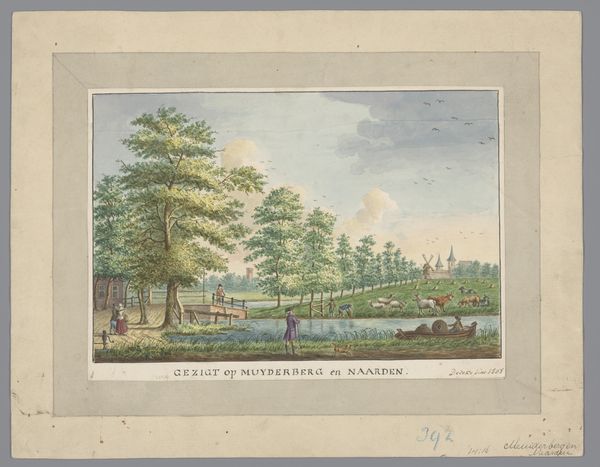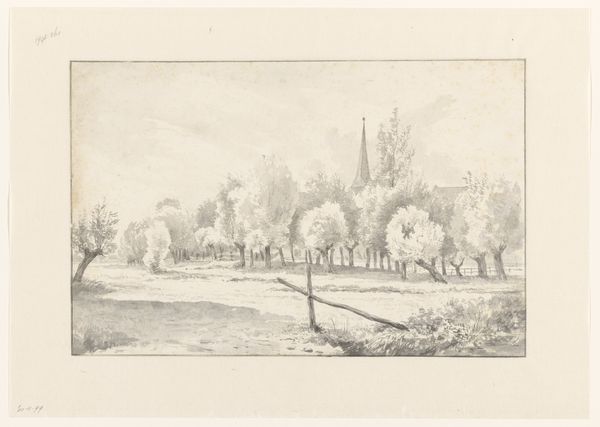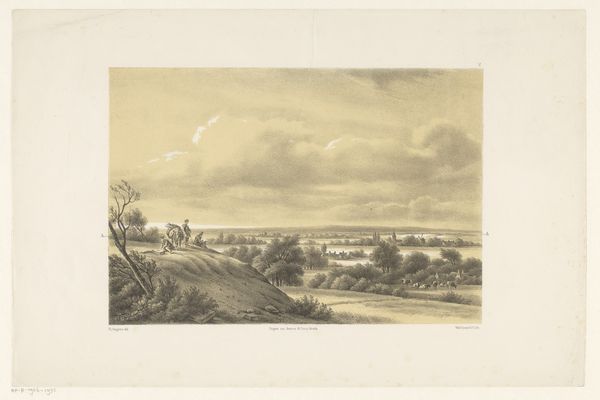
Gezigt op Mariana's oord, genomen uit het Koepelhuis van den Assistent Resident te Pontianak 1800 - 1900
0:00
0:00
painting, watercolor
#
water colours
#
dutch-golden-age
#
painting
#
landscape
#
watercolor
#
orientalism
#
watercolor
Dimensions: height 347 mm, width 546 mm
Copyright: Rijks Museum: Open Domain
Editor: Here we have J.E. Ljung's watercolor, "Gezigt op Mariana's oord, genomen uit het Koepelhuis van den Assistent Resident te Pontianak," created sometime between 1800 and 1900. It depicts a view of what looks like a colonial settlement. The painting seems very serene, almost idyllic, despite its somewhat clinical precision. How do you interpret this work? Curator: The visual precision you noted is key. It's a meticulously rendered landscape, almost like a cartographic survey, which speaks volumes about the period. The scene, while seemingly peaceful, must be understood in the context of Dutch colonialism in Southeast Asia. Editor: So, the tranquility might be deceptive? Curator: Precisely. This isn’t just a landscape; it's a depiction of power and control. Consider the vantage point - "from the Koepelhuis of the Assistant Resident." This positions the viewer, implicitly, as part of the colonial administration, looking down upon and surveying their domain. The seemingly simple act of observation becomes an act of dominance. What does the orderly arrangement of buildings and the prominently displayed flags suggest to you? Editor: I guess the flags are declarations of ownership and control. It’s not just a settlement; it's a projection of Dutch authority. It feels…calculated. The artist’s careful presentation almost seems to be whitewashing a more complex and likely exploitative situation. Curator: Exactly! The artwork becomes a tool of colonial ideology. It presents a curated, controlled image of colonial life, downplaying the inherent violence and inequalities of the system. It reinforces the colonial narrative of order and progress. Editor: So, reading between the lines, or perhaps, interpreting the subtext of the image, reveals a critical commentary on colonial power? It’s like the artwork inadvertently exposes the mechanisms of colonial control. Curator: Absolutely! And by understanding the historical and social context, we move beyond a superficial appreciation of the aesthetic and engage with the artwork's deeper, more politically charged meaning. Editor: That's fascinating. I'll never look at a landscape painting the same way again. I now understand that art is deeply intertwined with socio-political narratives, which allows for varied readings.
Comments
No comments
Be the first to comment and join the conversation on the ultimate creative platform.
